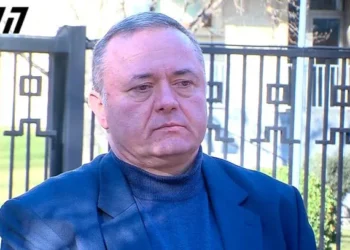With the results of the second Karabakh War, Russia’s policy toward the conflicts in the post-Soviet space has been put in the spotlight. Moscow’s policy toward the conflict zones is conditioned by the dynamics of Russia’s relations with the West, Turkey, and Iran, pursuit of military domination in the region, as well as ups and downs in bilateral ties with specific neighboring countries where the conflicts originated.
Although it was hard to see the emergence of a veritable Russian strategy toward territorial conflicts in the 1990s and early 2000s, by 2020 (as evidenced by the results of the second Karabakh war), it could be argued with some certainty that a purposeful use and subsequent management of conflict zones across the post-Soviet space has turned into an important part of Russia’s strategic thinking toward its neighborhood.
The emergence of the strategy is also closely related to the ongoing geopolitical struggle Russia has with the West over the borderlands, i.e., the regions that adjoin Russia from the west and south. The competition is manifested in the expansion of Western institutions such as the EU, its related Eastern Partnership, and NATO into Eastern Europe and, as a countermeasure, the Russian efforts to build the Eurasian Economic Union (EEU) with the aim of engulfing what once constituted the Soviet territory. Therefore, maintaining buffer states around Russia has been a cornerstone of the Kremlin’s foreign policy against the West’s eastward projection of military and economic influence.
The emergence of the Russian strategy toward territorial conflicts has also been conditioned by the arising constraints as an effective countermeasure against the neighboring states’ westward geopolitical inclinations. The Russian political elite knew that because of the country’s low economic attractiveness, the South Caucasus states would inevitably turn to Europe. The same was likely to occur with Moldova and Ukraine on Russia’s western frontier, as their geographical proximity to and historical interconnections with Europe render them particularly susceptible to the West’s attractiveness.
To prevent Western economic and military penetration and the pro-Western foreign policy vector in the neighboring states, the Kremlin has in many cases deliberately fomented various territorial conflicts. This policy has proved successful so far. Although the EU and NATO refrained from extending membership to Ukraine, Georgia, and Moldova because of economic and judicial problems even before the active phases of territorial conflicts, currently it is the land disputes and Russian military presence that serve as the biggest obstacle for the West’s institutional expansion.
However, Russia now faces a different problem: It has so far failed to produce a long-term vision for the separatist regions. Creating a unified economic space with the separatist territories is not an option, as usually little economic benefit is expected. Even if in some cases benefits could still be harnessed, the territories’ poor infrastructure prevents active Russian involvement. Additionally, local political elites are often sensitive to Russian domination.
Lately, the system has been difficult for Russia to navigate. In the first years following the collapse of the Soviet Union, Russia had to manage breakaway conflicts only in small and poor Georgia and Moldova. By 2020, Moscow’s responsibilities had increased significantly with the Donbas and Nagorno-Karabakh conflicts added to its strategy. To this could also be added the dysfunctional Syrian government. The Kremlin now has to manage a range of territories that rely almost entirely, in both the military and economic senses, on Russia, but that are also geographically dispersed, rarely economically advantageous, and geopolitically vulnerable.
This means that Moscow has to pour yet more money into multiple separatist actors spread across the former Soviet space, as well as Syria. It is more and more difficult for the Kremlin to maneuver across so many diverse conflicts simultaneously. At times, actors in the conflict zones try to play their own game independently from Moscow, and the latter has to closely monitor any deviations lest they harm the Kremlin’s strategic calculus.
Geopolitical trends indicate that Russia’s long-term strategy to stop Western expansion in the former Soviet space is losing its rigor. While it is true that Moscow stopped its neighbors from joining the EU and NATO, its gamble that those breakaway regions would undermine the pro-Western resolve of Moldova, Georgia and Ukraine has largely failed. Much will depend on democratic developments in these countries. Failure to promote favorable institutions will undermine the attractiveness of Moldova, Georgia and Ukraine to pull the populations of the regions closer the central government.
Emil Avdaliani is professor at European University and the director of Middle East Studies at Georgian think tank, Geocase.
Analysis by Emil Avdaliani














